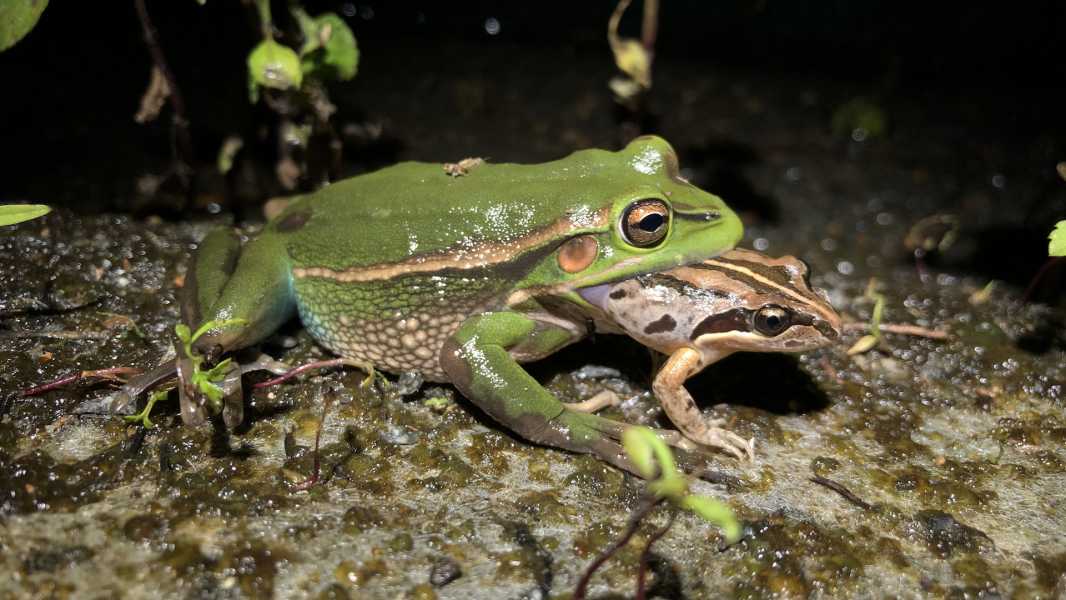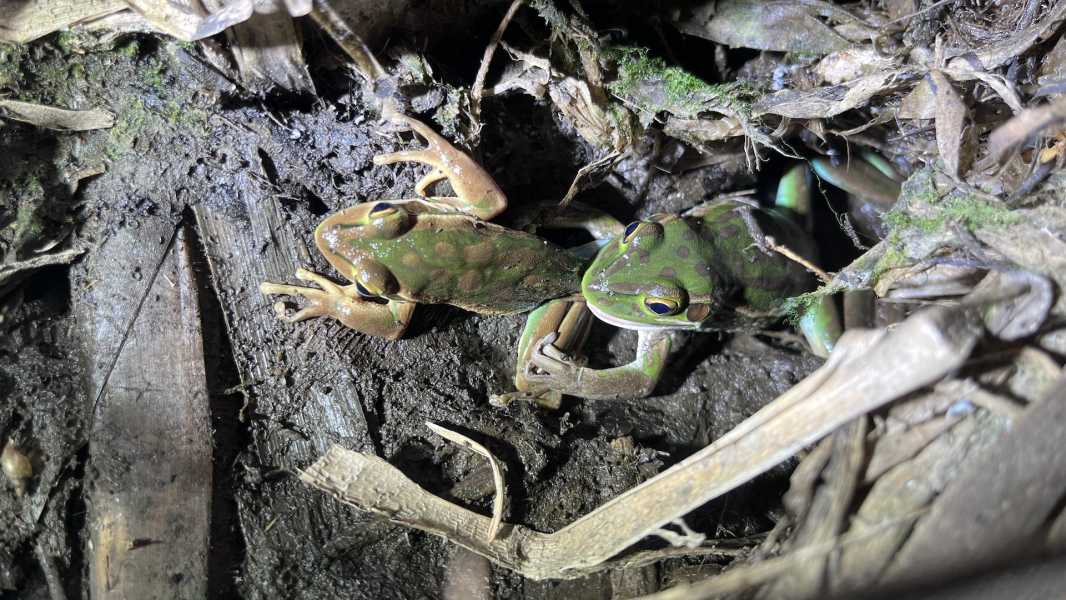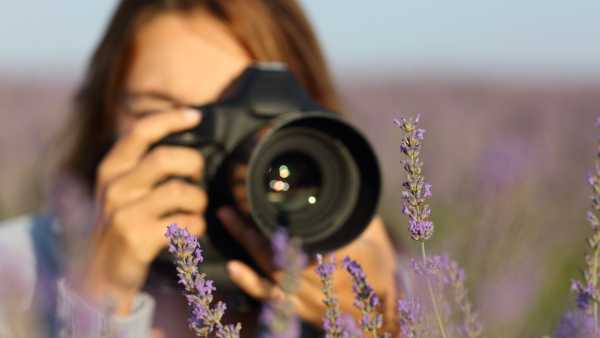
The authors of the new study looked at both sexual and interspecies cannibalism among frogs. (Photo courtesy of John Gould and Chad T. Beranek)
The researchers noted that reproduction could pose a danger to male frogs seeking to attract the attention of a potential mate: a female who shows no interest may quickly snatch them up and eat them.
For the first time, scientists on Kooragang Island in New South Wales, Australia, have observed adult female green and golden bell frogs (Litoria aurea) hunting their males during the breeding season. They detailed their observations in a study published June 12 in the journal Ecology and Evolution.
The researchers first noticed this behavior during field work when they heard a sharp cry.
“You can sometimes hear it in the field, and it's often a frog that's being attacked,” lead study author John Gould, a research fellow in population ecology at the University of Newcastle in Australia, told Live Science.
Following the sounds, Gould discovered that the distress calls were coming from a male with his entire thigh in the mouth of a larger female who was dragging him into a hole on the edge of a pond.
“The male frog was actually trying to avoid it by grabbing onto things around him, like sticks in the ground, to keep him from getting sucked into the water,” Gould said.
The male eventually escaped. This observation prompted Gould and his team to compare their nocturnal field observations over three consecutive breeding seasons with other studies that have reported cases of sexual cannibalism.

Scientists observed a female green frog (shown on the right) biting the hind leg of a male of the same species.
Gould noted that cannibalism among amphibians is well documented, but in most recorded cases, adults eat their young as they emerge from the water, while tadpoles eat each other.
Cannibalism among amphibians usually occurs when large numbers of individuals gather in one place, such as when tadpoles hatch from eggs, and also when there is a clear difference in size between the predator and its prey.
Many species of frogs exhibit sexual dimorphism, with adult females often being significantly larger than males.
“There is a high probability that females may use their males not only as breeding partners, but also, potentially, as food,” Gould said.
The researchers hypothesized that this
Sourse: www.livescience.com





